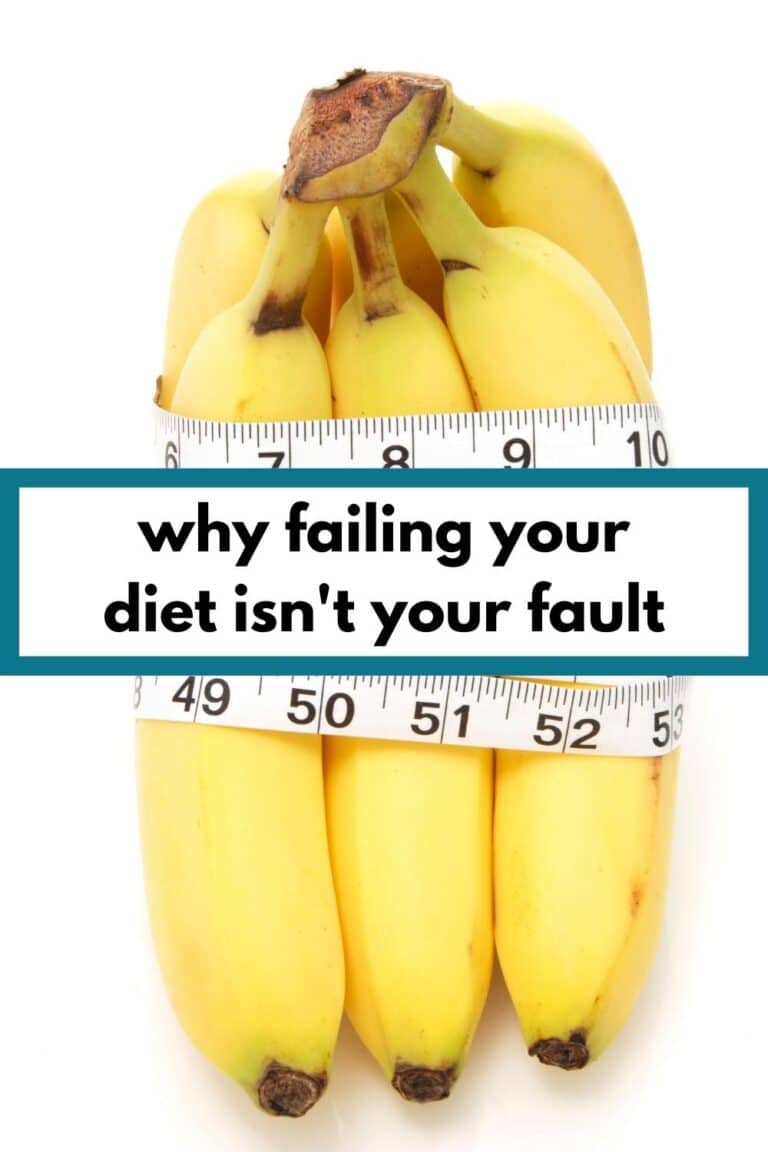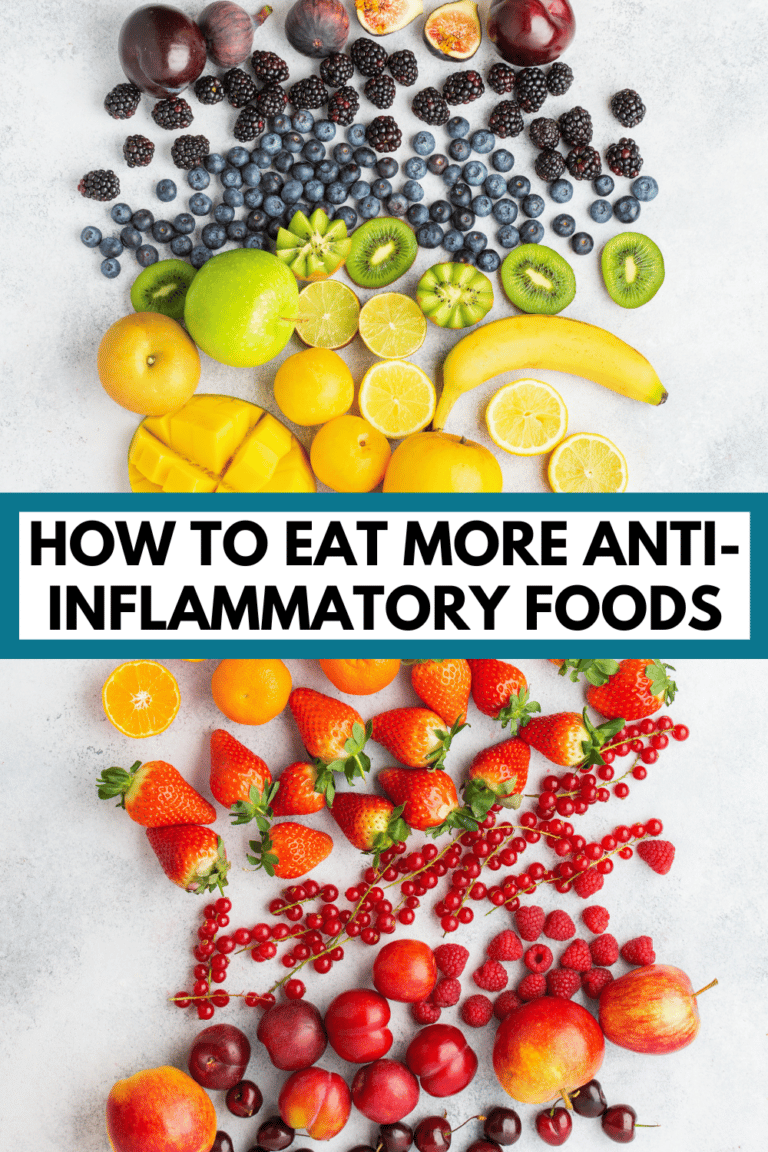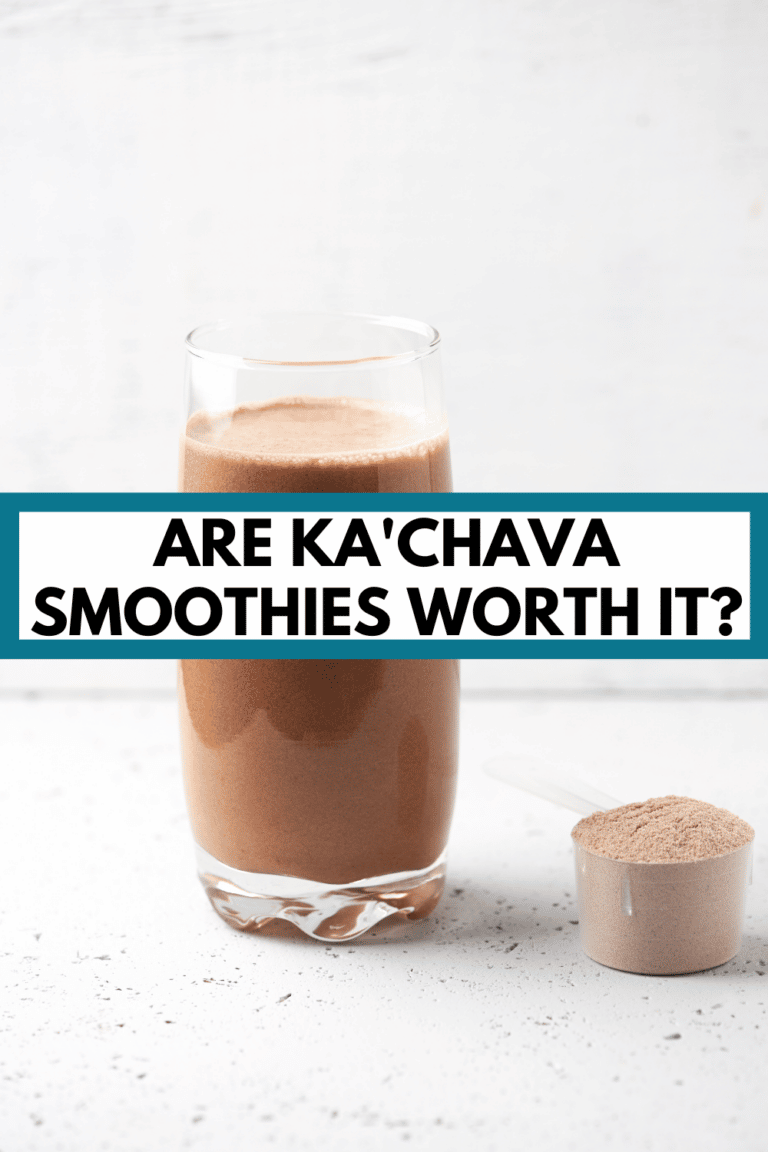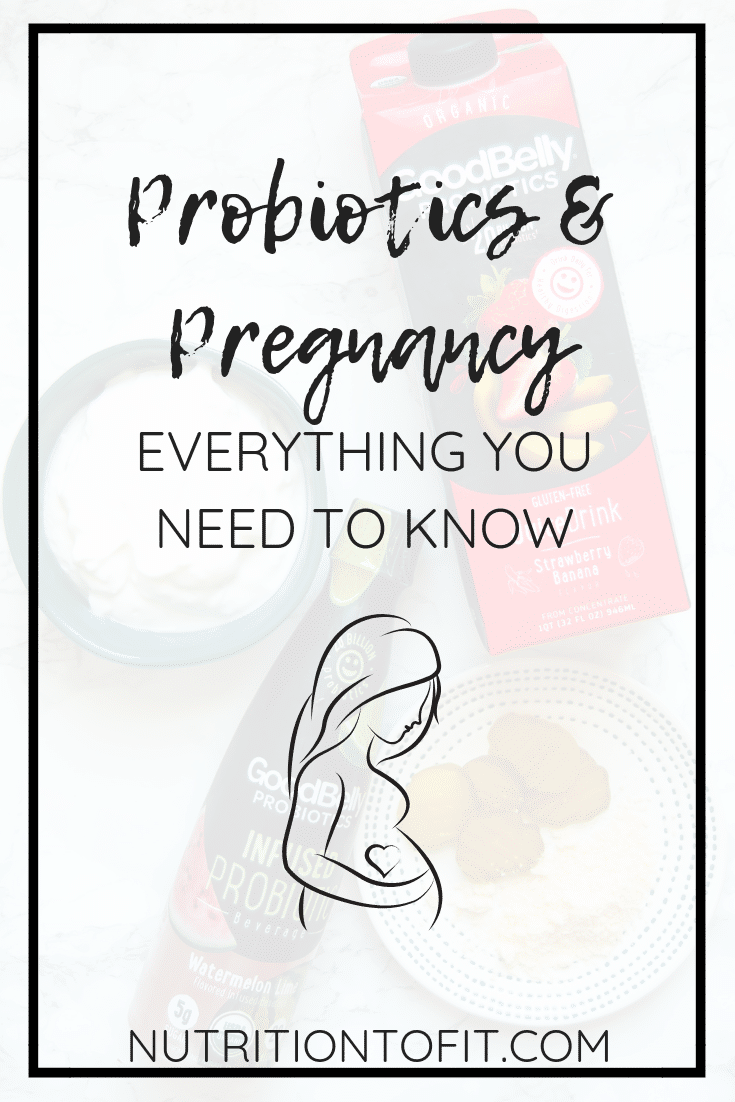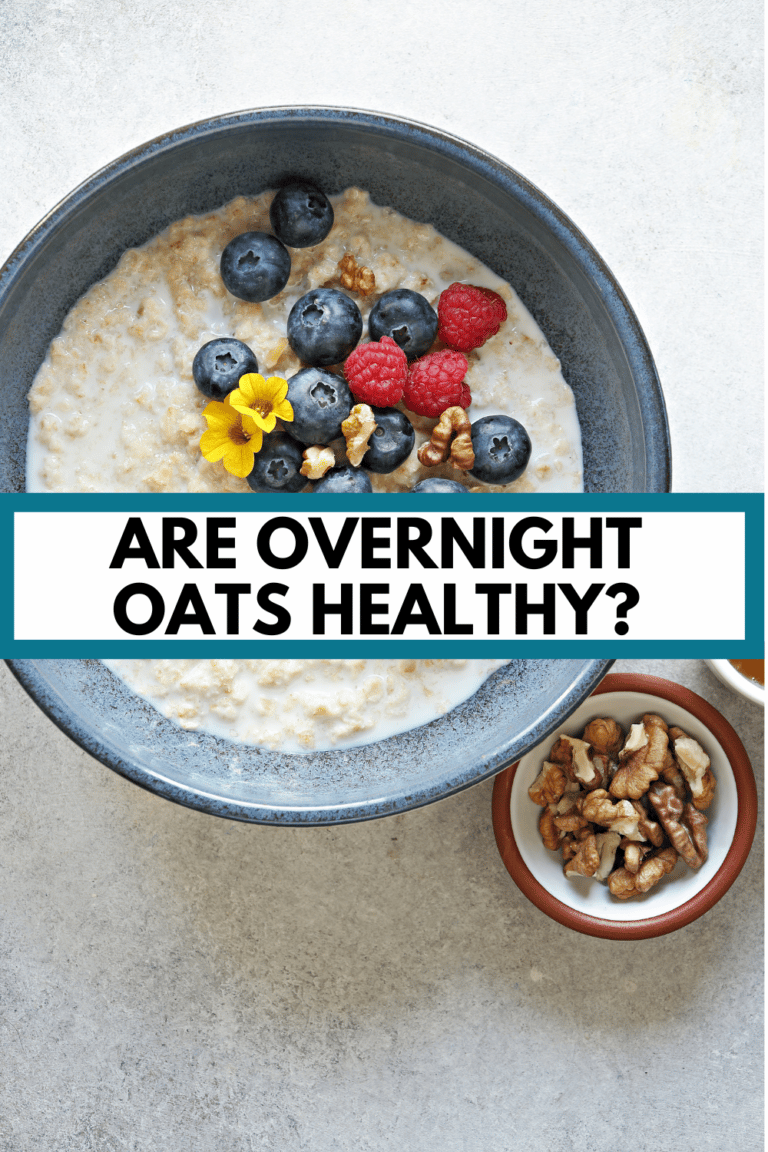Does Food Combining Work?
What is food combining – and does food combining work?! This diet has ancient roots, but modern proponents still claim many benefits. But does it do what it’s claimed to do? I’m a registered dietitian and I’m going to share the science behind food combining so you can decide for yourself if it’s healthy for you.
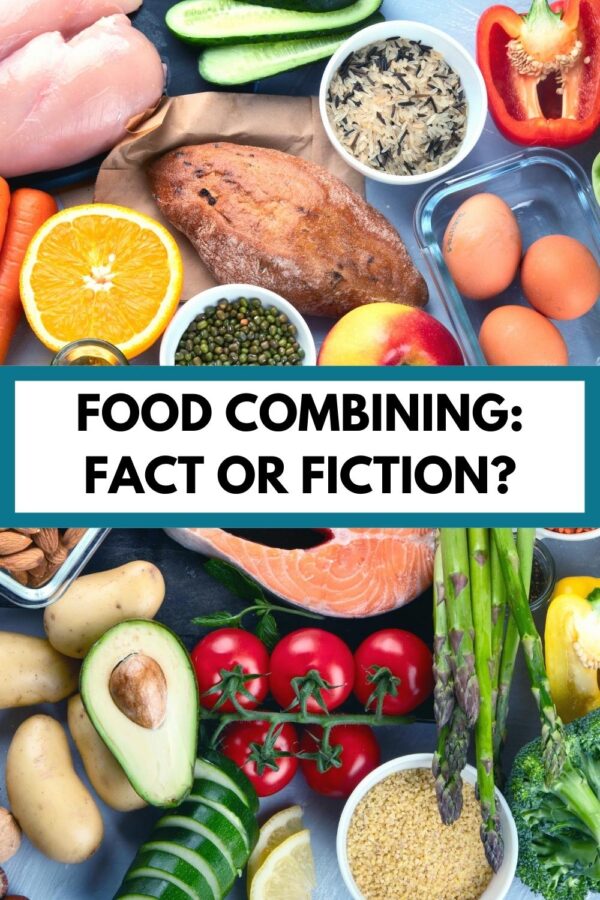
What is Food Combining?
Food combining is a diet based on the idea that certain foods are more beneficial when paired together.
Not only that, but proponents claim that combining the “wrong” foods together (i.e. chicken and rice) is problematic for your health, especially your digestion.
Food Combining Roots
Food combining has roots going back as far as ancient Indian Ayurvedic medicine.
Then in the 1800s it trended as “trophology,” then was revived again in the 1920s as the Hay diet.
Currently, food combining is a practice that still has many proponents amongst wellness enthusiasts.
Food Combining Principles
Food combining rules can vary based on the particular diet. For example, some food combining diets assign food pairs based on how acidic or alkaline they are. But the majority of food combining diets pair foods based on whether they’re a carbohydrate or starch, fruit, protein, fat, vegetable, or dairy.
Common food combining rules include:
- Fruit should always be eaten on an empty stomach – especially melons.
- Dairy products always need to be eaten on an empty stomach – especially milk.
- Sugar should only be eaten alone on an empty stomach.
- Protein and starch should not be eaten together.
- Protein and fat should not be eaten together.
- Starchy foods and acidic foods should not be eaten together.
- Different types of protein shouldn’t be combined.
- Fruits and vegetables shouldn’t be eaten together.
Food Combining Claims & Beliefs
So what exactly are all these food rules supposed to accomplish? The primary claimed benefit is improved digestion. Other claimed benefits include:
- Decreased bloating
- Feeling better
- Weight loss
- Reduced toxins
- Eliminating nutritional deficiencies
- Better nutrient absorption
Proponents of food combining believe this is because of two things:
- Different foods require different pH environments to digest. (Example: They claim protein foods require an acidic environment to digest, whereas carbohydrate foods need an alkaline environment.)
- Foods require different digestion rates. There’s a common analogy I’ve seen shared is to think of your stomach and digestion as a one way street. Because they claim different foods digest at different rates, this supposedly creates a food traffic jam. This leads to longer digestion, bloat, and is claimed to create rot and toxins building up in your digestion system.
But despite nutrition being a relatively young science, modern science and nutrition has come a long way since food combining’s ancient roots. And basic anatomy and physiology tells us none of this is how human digestion actually works.
How Digestion Really Works
Food combining acts like when you eat, the foods separate into nice even layers in your stomach, with each type of food waiting for its turn to be digested and pass into the small intestine. Something like this, where it’s easy for food to “pile up” like a “traffic jam”:
But in reality, even when food first hits your stomach, it’s more like this:
All incorporated and being digested together.
Digestion Starts in the Mouth
One reason for this is because digestion actually starts in the mouth. Your teeth and tongue work together to start mechanically breaking down the food.
As this is happening, the food mixes with saliva, which contains some digestive enzymes (salivary amylase, lysozyme, and lingual lipase).
With these digestive enzymes at work, digestion is already well underway before the food has even left your mouth.
When Food Hits the Stomach
Once in the stomach, stomach muscles work to break food down further.
This creates chyme – a pulpy, acidic fluid made up of all the stomach juices and partially digested food.
Then Food Heads to the Intestines
Up next is this chyme heading to the duodenum (the first part of the small intestine). Chyme is slowly released into the duodenum, along with digestive enzymes and bicarbonate from the pancreas to help break down fat, carbs, and protein, and bile. (Bile is produced in the liver, stored and secreted from the gallbladder, and helps to digest fat.)
After the duodenum, digestion continues in the jejunum (the next part of the small intestine). Here, the digestive process creates even smaller molecules, allowing for some individual nutrients to be absorbed.
Then it heads to the ileum – the longest part of your small intestine, and where nearly all nutrients are absorbed through the intestinal wall.
At this point, all that’s left is pretty much water and waste (i.e. plant fiber, dead cells shed from your digestive tract). This is pushed through the large intestine, where water is absorbed and the waste eventually exits as a bowel movement.
Bottom Line: You Don’t Need Food Combining for Digestion
Your body can handle mixed meals (meaning meals that contain fat, protein, and carbohydrates). Everything we’ve learned about human anatomy, physiology, digestion, and nutrition tell us mixed meals are meant to be consumed.
In fact, we now also know that food rarely exists as an isolated macronutrient. Even just looking at protein: most plant proteins also contain carbohydrates (like lentils and beans). Most animal proteins also contain fat (like salmon, beef, chicken, eggs, and more). Some contain all three (like milk and yogurts).
Your body is more than equipped to digest food, without having to micromanage food combining principles. Embrace the knowledge we’ve gained over the past several centuries and don’t stress yourself out with food combining for digestion.
Food Combining & pH Balance
So is pH important? Yes.
Do digestive enzymes need to be at a specific pH to function correctly? Yes.
Is your body capable of maintaining the necessary pH in its digestive tract on its own? Yes.
Is food combining necessary or helpful at all? No.
Let’s take a deeper look:
pH is measured on a scale of how acidic or alkaline (basic) a solution is, ranging from 0-14. 0 is the most acidic and 14 is the most alkaline, with 7 being neutral.
Your body regulates the necessary pH of each part of your digestive tract, no matter how alkaline or acidic the foods you eat are.
Here’s an example:
- Stomach: Typically is very acidic (pH 1-2.5), but pH rises when you eat, no matter what you eat. So your body self-regulates by quickly releasing more gastric acid until the pH is back where it needs to be. By maintaining this low pH, the digestive enzymes in the stomach are activated, proteins begin to be digested, and it helps kill any bacteria in food.
- Small Intestine: It cannot handle the extremely acidic environment of your stomach. No matter what is eaten, the stomach is an extremely acidic environment and your small intestine requires a more alkaline environment (pH around 6-7). So as soon as the contents from your stomach enter the small intestine, your body self-regulates by releasing bicarbonate. This allows the small intestine enzymes to activate and function at their best.
No matter what you eat, your body will self-regulate to get each part of your digestive tract at the pH it needs to be.
And if your body is struggling to self-regulate? It’s more of a you-need-to-be-in-the-ICU type problem, not a you-ate-a-bun-with-your-burger problem.
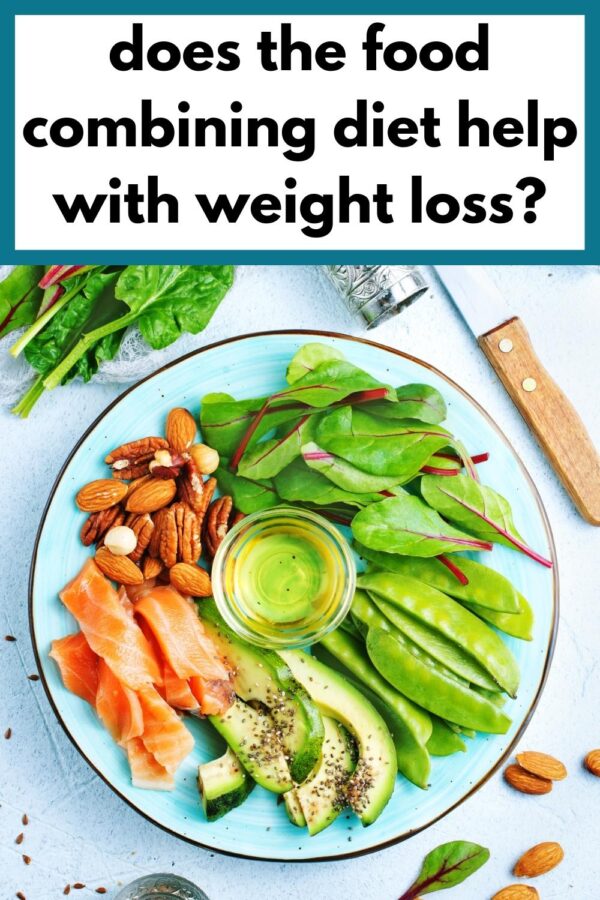
Food Combining and Weight Loss
There is nothing magical about food combining that holds the secret to weight loss.
There is one published research article that investigated food combining’s effects on weight loss. Calories and macronutrient composition were kept the same between the control and experimental groups. The study found no difference in weight loss results with food combining.
So Why Do People Say They Lose Weight?
If you’re wondering how that study could be, given the many stories of food combining diet weight loss online, there are a lot of potential reasons:
- Increased awareness of what you’re eating (which typically leads to more nutrient-dense and less ultra-processed foods).
- Eating more non-starchy vegetables.
- Food combining promotes waiting a few hours between switching food types, so this leads to less snacking and grazing.
- Typically there’s less sweet beverages consumed.
- More cooking at home and less restaurant and processed foods.
Intentional or not, all of these factors may contribute to a reduced calorie intake. And while there are a lot of influences on weight loss, a calorie deficit is the most important.
Food Combining & Blood Sugar
I also want to take a moment and touch on blood sugar, because the principles of the food combining diet can actually work against evidence-based best practices for blood sugar management.
Eating foods high in sugar or starch alone on an empty stomach leads to more dramatic blood sugar spikes and fluctuations.
In fact, consuming fat, fiber, and protein with carbohydrates actually helps slow the digestion of carbs and delays their absorption into blood.
For a healthy individual, this won’t be a big deal every once in a while – you just may feel a slump or “blood sugar crash” fairly soon after eating that high starch or sugar meal.
But for those with insulin resistance, pre-diabetes, and diabetes, this can be a much bigger, and even dangerous problem.
As a dietitian, I strongly discourage the use of the food combining diet in these populations.
Food Combining & Disordered Eating
The principles of food combining aren’t just highly unnecessary (and not research-based), but they have a lot of rules and restrictions.
This can promote an unhealthy fixation with food and for some can even lead towards disordered eating and eating disorders.
Caring about nutrition, eating for health, and even losing weight don’t have to mean having an unhealthy relationship with food.
But any diet that has a significant number of rules and restrictions is a red flag. Keeping your mental health at mind and food-related stress at bay is key for a healthy relationship with food and sustainable changes to your healthy eating habits. (Check out more about the diet cycle here!)
Evidence-Based Food Combining Practices
While this specific food combining diet is not something that is rooted in current science (or necessary at all), there actually are some food combinations that come with evidence-based benefits! Here are a few:
- Iron & Vitamin C: Foods rich in vitamin C actually help your body absorb more iron.
- Pairing High Carb Foods with Protein, Fat, and Fiber: Carbs need friends! Pairing high-starch and sugar foods with protein, fat, and/ or fiber can help slow the absorption of glucose to your bloodstream, reducing blood sugar spikes.
- Combining Incomplete Proteins to Obtain All Essential Amino Acids: Some protein foods are incomplete, meaning they don’t provide all of the essential amino acids. Pairing certain incomplete protein foods can help provide all essential amino acids in your diet (like bread and peanut butter, pita and hummus, and rice and beans).
Final Thoughts – Does Food Combining Work?
It’s safe to say that food combining is not a science-based diet by any stretch. We have centuries of science about the human body, anatomy, physiology, digestion, and nutrition to know that the rules and claims of the food combining diet have no basis in science and aren’t necessary.
If you’re looking to change your diet to more healthy eating habits, I highly recommend focusing on creating realistic habits for you – not arbitrary, baseless restrictions.
Check out this article on 7 Healthy Eating Habits for one more evidence-based place to start!
Note: This article was originally published July 22, 2019 but was updated to reflect current science and re-published on September 21, 2022.


